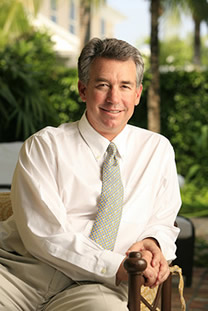Family & Golf
Family Legacy
 Crosby’s association with golf began at birth as the
son of a famous father who was described as being a golfer who loved
to sing as opposed to the singer who loved to play golf. Crosby’s
love for golf was further predetermined as having Masters, PGA Champion,
and 16-time PGA TOUR winner Jack Burke as a godfather.
Crosby’s association with golf began at birth as the
son of a famous father who was described as being a golfer who loved
to sing as opposed to the singer who loved to play golf. Crosby’s
love for golf was further predetermined as having Masters, PGA Champion,
and 16-time PGA TOUR winner Jack Burke as a godfather.
Becoming a scratch golfer at the age of 15, he went on to be the US Junior Medalist in 1979, US Amateur Champion in 1981, Low Amateur in the 1982 US Open, 1982 Porter Cup Champion, 1982 Mid-Atlantic Champion, and played on the 1982 World Amateur, and the 1983 winning Walker Cup teams. He was ranked the 3rd best amateur golfer in the country in 1981 and 1982 by Golf Digest amateur rankings.
Upon the death of his father in 1977, Crosby coordinated and hosted the Bing Crosby Pro-Am from 1978 through 1984. During this time, Crosby was responsible for 168 amateur invitations and pro pairings as well as 25 professional exemptions for the tournament. His mother, Kathryn Crosby, co-hosted the event with Nathaniel from 1982 to 1984.
Golf Industry Veteran
After graduating from the University of Miami in 1984, Crosby turned pro and earned his European PGA Tour card by qualifying through its Tour school on his first try. Crosby finished 87th on the European Tour money list, behind the likes of Seve Ballesteros, Bernard Langer, Ian Woosnam, Sandy Lyle, Greg Norman and many other notables. The next two years resulted in “negative trending” as he finished 105th and 155th on the money list and opted out of competitive golf to organize a group that purchased the Toney Penna Golf Company.
Toney Penna, who was Crosby’s golf instructor and mentor during his college years, was largely responsible for promoting Mac Gregor Golf to the 1# market leader for more than 40 years before launching his own company in 1969.
Jack Nicklaus approached Crosby to help launch his hard good equipment company in 1992. As President of the company, Crosby was the first to initiate a “recommendation at the point of sale” strategy, which grew the company from its inception from $7 million in 1993 to $11 million in 1994, from $15 million in 1995 to $17 million in 1996 and to $23 million in 1997.
Crosby enacted this strategy by limiting the distribution and giving the retailers a reason to promote a recognizable brand. He became known by many of the major golf retailers as “Mister 45% margin” as no other “high-end brand” offered retailers significant margins on hard good products at that time.
Crosby began with Orlimar Golf in January 1998. Orlimar was a 37-year-old family business run by Lou and Jesse Ortiz and had barely more than $1.5 million in sales. Virtually all of its sales occurred in the Northern California market.
The company had changed hands the previous year with Rich Oldenburg and Ed Dolinar (two of Crosby’s best customers with the Northern California Nevada Bob’s franchise) purchasing control of the company. Crosby directed sales for Orlimar as a consultant after it initiated a Direct Response Marketing strategy
The following year saw Orlimar Golf grow from $1.5 million to $70 million in net sales and $103 million in gross sales with a $13 million EBITDA starting from a $700,000 cash position. In 1999 Orlimar grew to $85 million in net sales. (Crosby initiated a 38 percent quarterly rebate to Orlimar’s largest accounts, which caused the disparity between gross and net sales. Orlimar stopped accounting for gross sales in 1999).
High End Fractionals
Chileno Bay
In 2003 to get his feet wet in the Real Estate industry Crosby engaged with the Chileno Bay project on the old Cabo San Lucas hotel property which is opened in 2004 with two Tom Fazio golf courses. The Chileno Bay project has the distinction of selling “high-end fractional properties.” The Project, at the time, was selling 90-day deeded ownership to homes that included a golf membership for more than $600,000.
Private Quarters
In 2004 and 2005 Crosby reunited with Dick Bellinger, the former 15-year CEO of Golden Bear International. Crosby worked to promote “deal flow” for Private Quarters which sold fractional ownership town homes attached to private golf clubs. Through this experience, Crosby became networked with many of the leading golf developers in the country and realized that a non-deeded approach could create a network of courses that would give the avid affluent golfer a “have to have” membership.
St. Andrews Grand
Crosby was engaged to promote the famous brick building behind the 18th hole at the Old Course in St. Andrews, Scotland. Formally known as Hamilton Hall, the building is under the process of being renovated into 23 luxury residences. Some of these residences have been used to create a membership with a “right to use.”
Link to Sports Illustrated Article
Photo collage



